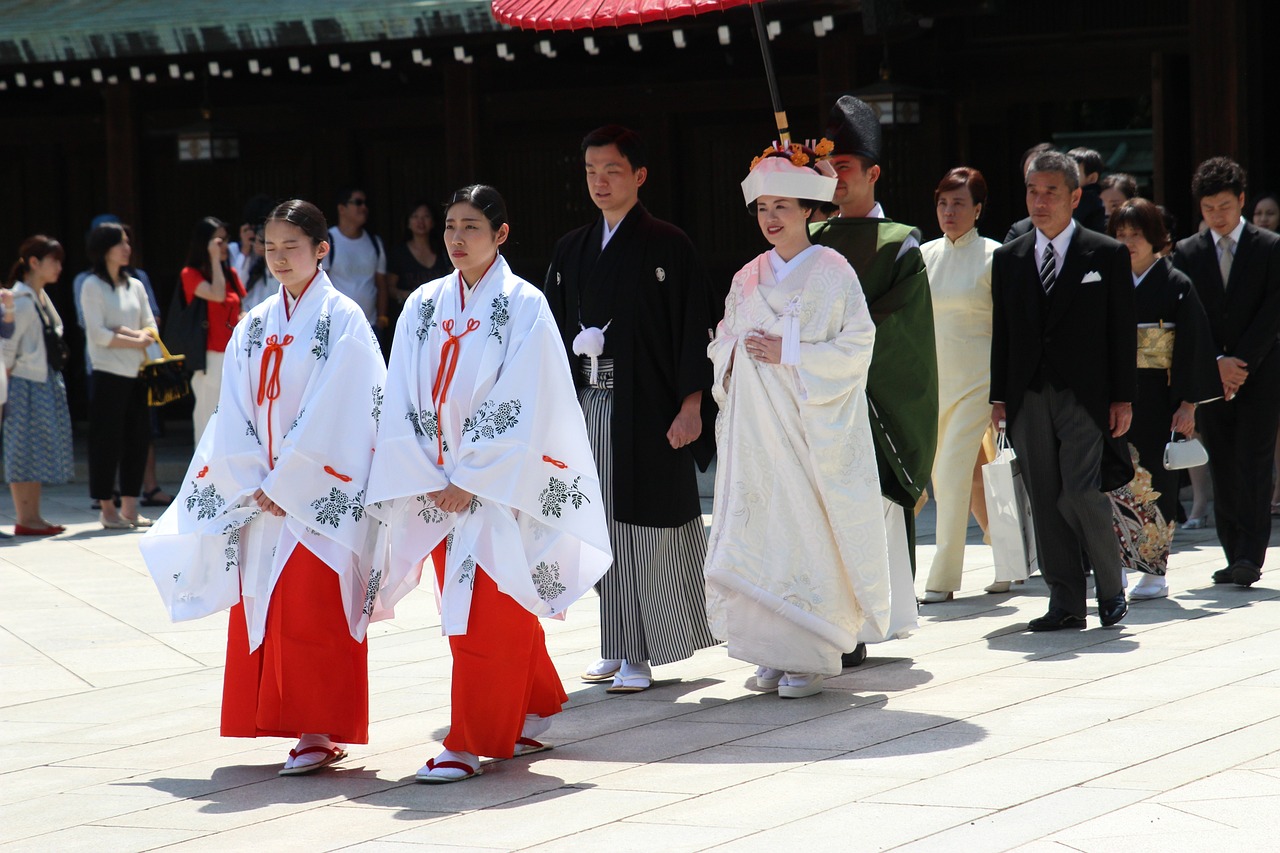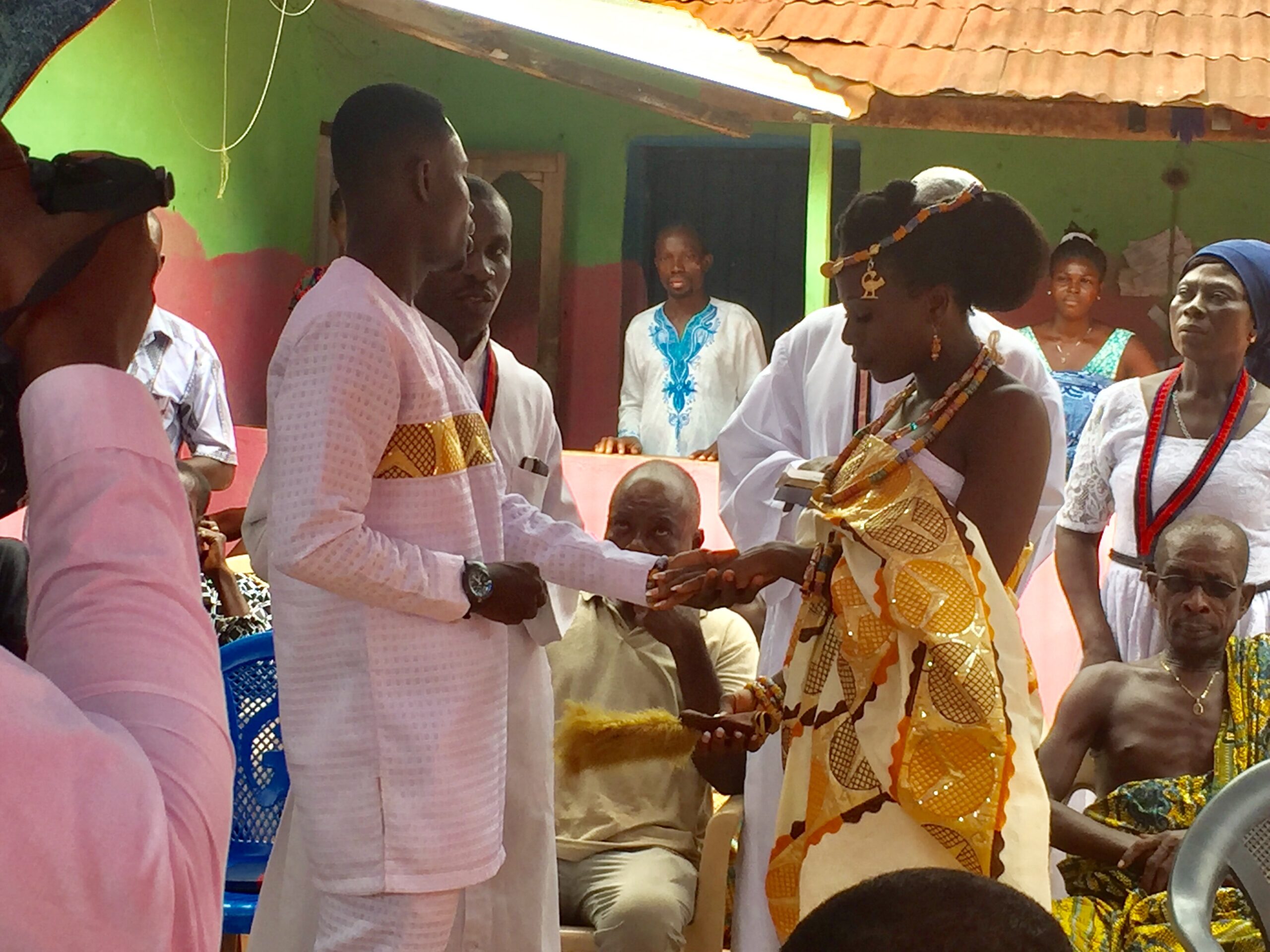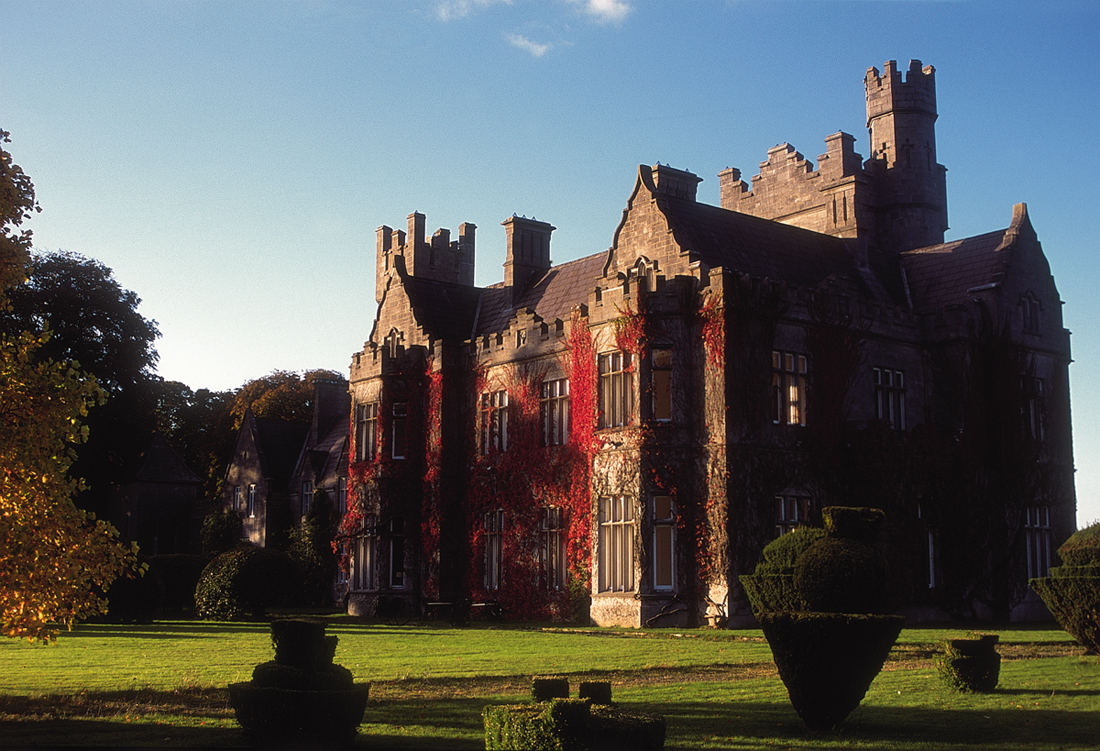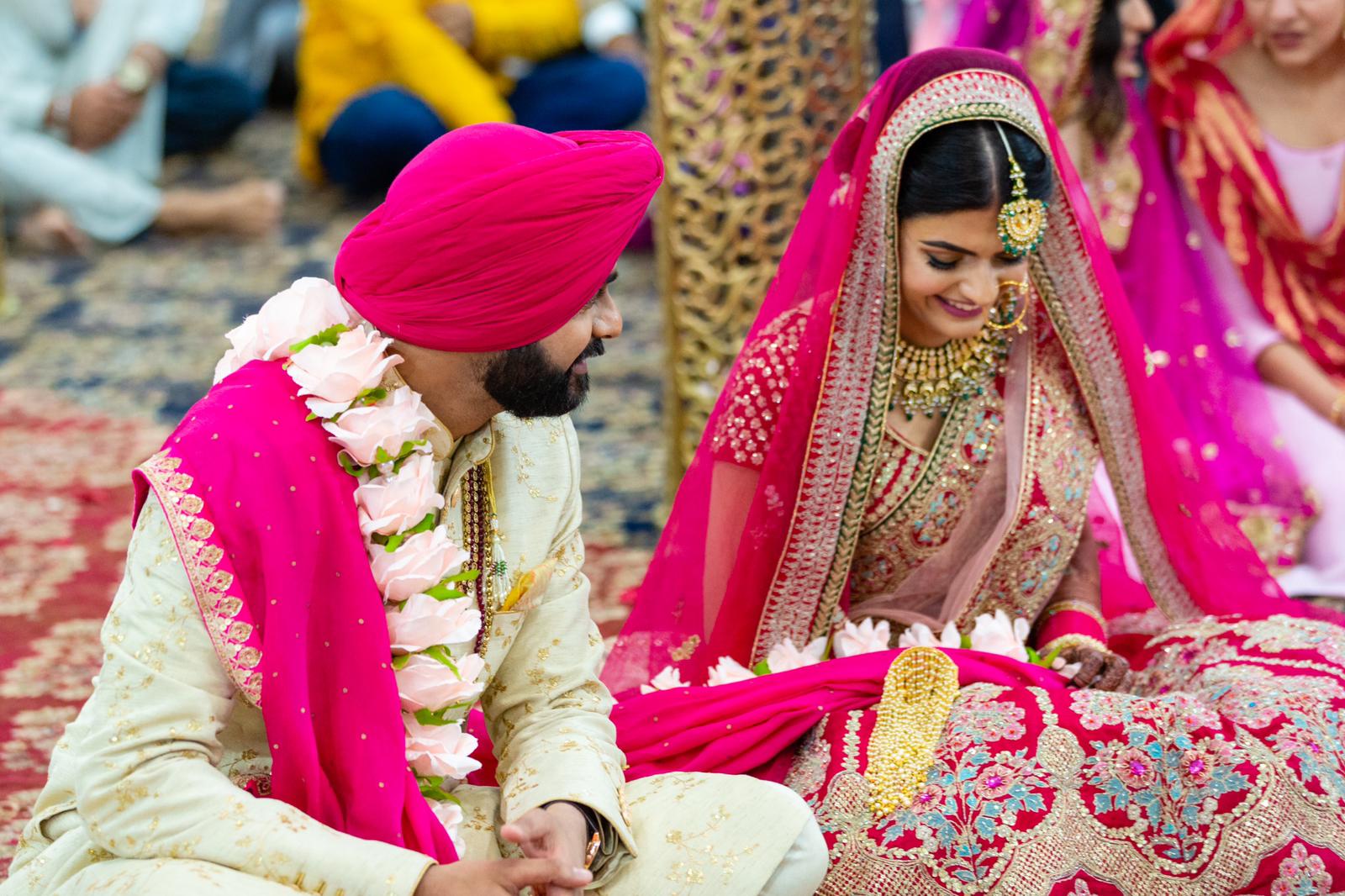Japanese culture is a fascinating tapestry, interweaving tradition with modernity in a way that captivates the world. The depth and beauty of these cultural roots shine brightest during significant life events, particularly during weddings. A traditional Japanese wedding, in all its magnificent and meticulously planned detail, is one of the most significant ceremonies in Japanese culture. It’s an event where families bond, future promises are made, and the richness of heritage is celebrated.
Our guide invites you to explore the charm and intrigue of a traditional Japanese wedding, one detail at a time. As we embark on this journey, you’ll discover how these ceremonies are steeped in centuries-old traditions, perfectly preserved and celebrated in the modern age. Whether you’re planning to attend such a wedding, preparing for your own, or just interested in learning more about Japanese culture, this guide is for you.
The Engagement: Yusoku Kojitsu
In a traditional Japanese wedding, the journey to marital bliss begins long before the wedding day. It starts with ‘Yusoku Kojitsu’, an engagement process steeped in ancient tradition. This is no ordinary proposal, but a formal and symbolic affair that often involves both families.
The yusoku kojitsu involves a series of gift exchanges, starting with the yuino. The groom’s family presents the bride’s family with a carefully chosen selection of gifts – from sake and seaweed to a spread of luxurious fabrics. Each gift holds symbolic value, representing prosperity, longevity, and fruitful offspring.
Next comes the betrothal, known as the Nosai no Gi. Here, a matchmaker, or nakōdo, represents the groom’s family to officially propose to the bride’s family. The bride’s acceptance of the proposal is then marked by the exchange of rings. This isn’t just a demonstration of commitment, but a symbolic merging of two families.
Wedding Invitations and Accessories
With the engagement sealed, it’s time for the wedding preparations to begin, starting with the invitations. These aren’t your typical wedding invites; instead, traditional Japanese wedding invitations are works of art in their own right.
Typically, these invitations are packaged in a shugi-bukuro, a special envelope designed with intricate patterns and symbols, often featuring cranes or turtles – creatures synonymous with longevity and good fortune in Japanese culture. Inside, recipients find not only the wedding details but also a beautiful origami crane, another symbol of good luck.
Along with the invites, the couple prepares their wedding accessories. One of the most symbolic accessories is the san-san-ku-do sake set. This set includes three sake cups that will be used for a traditional ritual during the ceremony, representing three key human attributes: heaven, earth, and mankind.
Choosing the Wedding Attire: Kimono and Hakama
No element of a traditional Japanese wedding captures the spirit of the occasion quite like the attire. The couple typically wears a combination of kimonos and hakama pants, chosen meticulously for this special day.
The bride often wears a pure white kimono, known as shiromuku. This kimono, symbolizing purity and maidenhood, is often intricately adorned with delicate embroidery. Some brides may also choose a colorful uchikake kimono to wear over the shiromuku during the reception.
The groom’s attire is equally meaningful. He typically wears a black kimono, known as montsuki, paired with hakama, pleated pants symbolizing virtue. Over this, the groom may wear a haori, a formal jacket. Each detail of the attire is chosen with the greatest care, ensuring the couple shines on their special day.
The Wedding Venue: Shrine Weddings vs. Hotel Weddings
The choice of venue is another crucial element in a traditional Japanese wedding. Many couples opt for a shrine wedding, known as a Shinto wedding. This ceremony is held at a Shinto shrine, where the couple is blessed by a Shinto priest in front of their family and close friends.
Alternatively, the couple may choose a hotel wedding. While still rooted in tradition, hotel weddings allow for more guests and often combine Japanese customs with Western elements. The ceremony might still involve a Shinto priest, but the reception often resembles a Western-style wedding reception, complete with a wedding cake and a first dance.
Both types of weddings offer unique experiences, each beautiful in its own way. The choice depends largely on the couple’s preferences and the scale of the wedding they wish to have.
The Wedding Ceremony: Rituals and Customs
The ceremony of a traditional Japanese wedding is an event laden with symbolism. One of the most significant rituals is the San-san-ku-do, or “Three-three-nine-times”. During this ritual, the couple shares three sips each from three different-sized sake cups. This ritual binds the couple and their families together.
After the San-san-ku-do, the couple pays their respects to their families and ancestors, acknowledging their role in bringing the couple together. They also make offerings to the kami, or Shinto gods, asking for their blessings for a happy and prosperous marriage.
The wedding ceremony also often includes readings from ancient Japanese scriptures and blessings from the Shinto priest. Each part of the ceremony is designed to honor the past while celebrating the future, marking the beginning of the couple’s journey together.
The Wedding Reception: Feasts, Speeches, and Celebration
The wedding reception following a traditional Japanese wedding is a vibrant celebration filled with laughter, joy, and a lot of food. This is the part of the day where the formalities give way to festivities, and the couple can truly celebrate their union with their guests.
The reception begins with a kaiseki dinner, a traditional multi-course meal showcasing the best of Japanese cuisine. Each dish is thoughtfully prepared and beautifully presented, adding to the overall experience.
During the reception, the couple often changes outfits multiple times. The bride may switch from her white shiromuku to a colorful uchikake, and later into a Western-style wedding dress. This transition of outfits represents the bride’s readiness to start her new life.
Speeches, toasts, and performances from friends and family are another highlight of the reception. They add a personal touch to the event, celebrating the couple and their journey together.
Post-Wedding Rituals: Nijuiniso
While the reception may mark the end of the wedding day, the rituals associated with a traditional Japanese wedding are far from over. One such ritual is the Nijuiniso, or the “two families ceremony”.
This ceremony usually takes place a few days after the wedding. During this time, the newlyweds visit their families and present them with gifts. This act serves as an expression of gratitude for their support throughout the wedding process. It also signifies the joining of the two families, strengthening their bond.
The Honeymoon: Traditional Destinations and Practices
Just as in other cultures, Japanese newlyweds often embark on a honeymoon following their wedding. While modern couples might choose to travel abroad, there is a long-standing tradition of visiting popular destinations within Japan.
One such place is Ise Shrine in Mie Prefecture, considered the most sacred Shinto shrine. It’s believed that visiting the shrine brings blessings and good fortune to the newlyweds. Kyoto, with its beautiful temples and gardens, is another popular choice. The choice of the honeymoon destination often depends on the couple’s interests and what they wish to experience together.
The Significance of the Traditional Japanese Wedding
Understanding a traditional Japanese wedding extends far beyond just knowing about the ceremony. The real beauty lies in the meaning behind each detail. Every ritual, every symbol, and every tradition has a purpose – to honor the past, celebrate the present, and hope for the future.
The wedding is not just about the couple; it’s about the families coming together. It’s a celebration of love, commitment, and community. It’s a beautiful showcase of Japanese culture, highlighting the country’s deep-rooted traditions and values.
As we end our journey exploring traditional Japanese weddings, we hope you’ve gained a deeper understanding and appreciation of these remarkable ceremonies. Even though they are steeped in centuries-old traditions, they continue to be a significant part of modern Japanese culture, carrying on the legacy of the past into the future.
In writing this guide, it was our intention to bring you closer to the heart of Japanese culture and customs. We hope we’ve been able to shed light on the intricate details that make a traditional Japanese wedding a truly unique and beautiful celebration. As you can see, it’s about much more than just the wedding day. It’s a journey of love, tradition, and unity – a celebration that begins long before the wedding day and continues long after.
We welcome any suggestions or questions. You can email us or contact us using the contact page.
You can also connect with us on the following social networks:









0 Comments